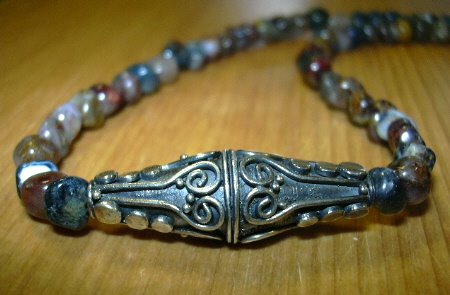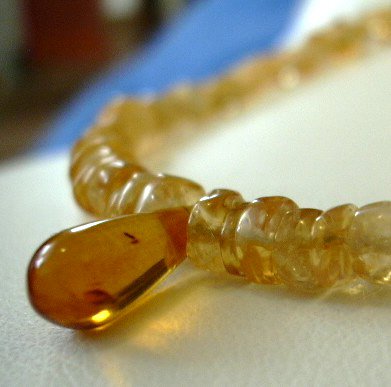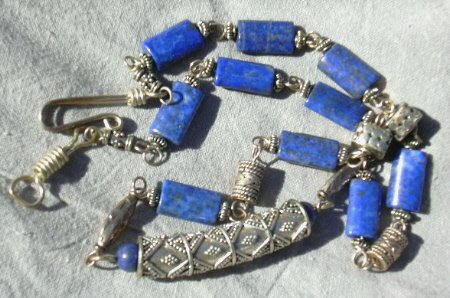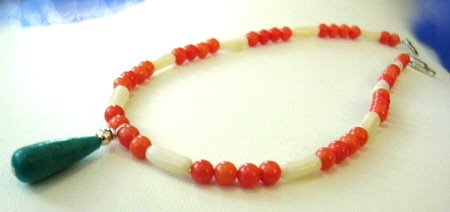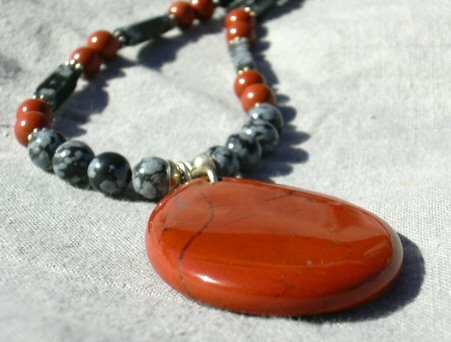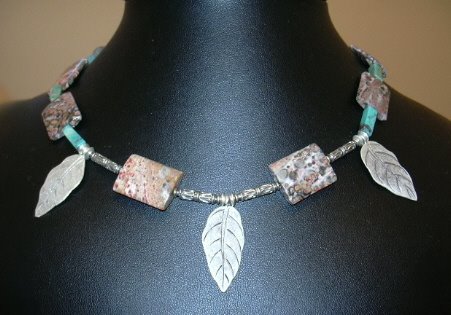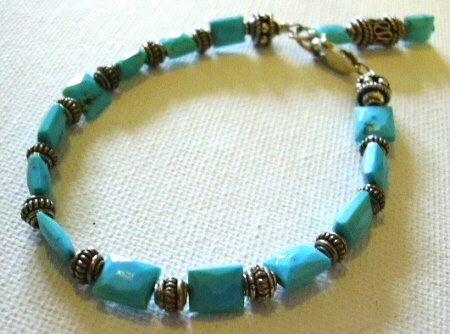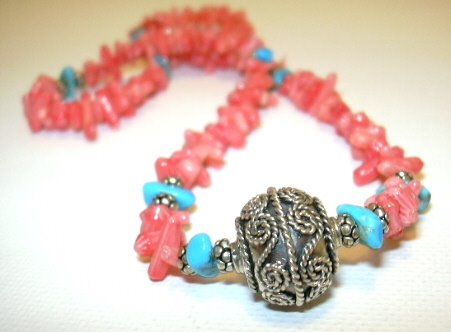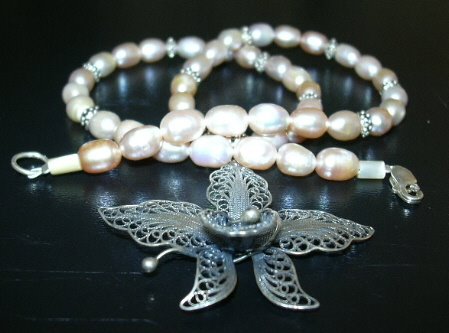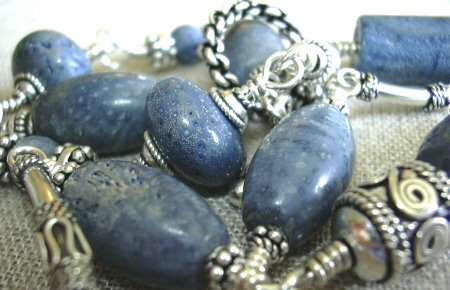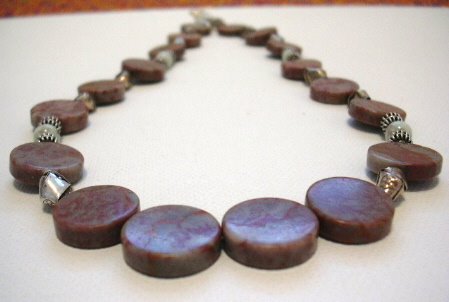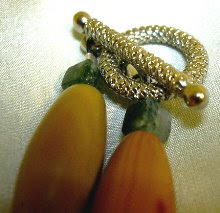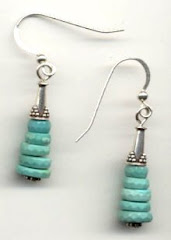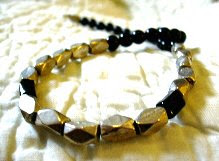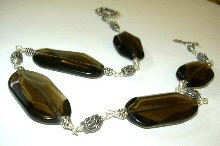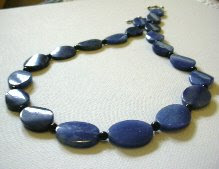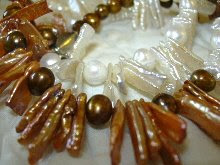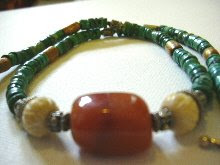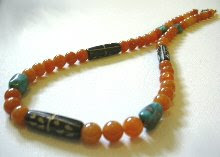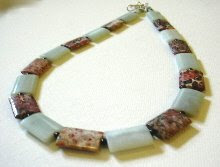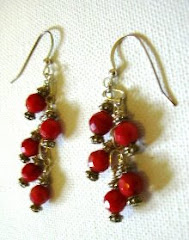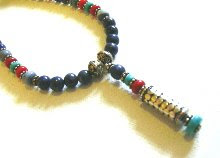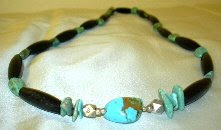There are a few things to watch out for, since you are not there to select the strands and specimens yourself:
- Not all sellers disclose everything about the beads they're selling in their product descriptions. I've encountered many sellers who don't mention their turquoise is stabilized, their coral is
dyed, their smoky quartz
is heat-treated, their gold coral
is chemically altered, their silver is plated rather than sterling, their yellow turquoise
is really jasper, and their pearls
are cultured in freshwater - although they are supposed to. If the wording is vague, assume a lower-end, cheap product rather than a higher-end, expensive product.
- An expensive price is not necessarily an indicator of quality. Most inexpensive freshwater pearls on the market today have a very thin layer of nacre...and the more expensive Biwa pearls
, stick pearls
and coin pearls
are not necessarily any better. The only way to test the quality and authenticity of some beads (such as amber
) is to take a sample and put it through tests.
- Pay close attention to the number of beads that come in the lot. Most beads are sold in 16" strands, but many are sold in longer or shorter strands. Others offer many beads in exact quantities or, in the case of seed beads, occasionally in weight. When you see that great, irresistible deal, make sure it's for the number of beads you think it is. And if you pay a high price for high-end beads, like quality lapis lazuli
, then measure the length of the strand that comes - if it's short, then send it back.
Know the size of beads you are buying. On different screens photos can display differently and it's easy to get a wrong impression of the size. Small beads may look large; large beads
may look small. Bead sizes typically come in millimeters, and there
are 25 millimeters, or 2.5 centimeters, per inch.
Look for sharp, high-resolution photos. Photos that are blurry, overexposed, or obviously enhanced by photo editing software will often hide surp
rises such as flaws and enhancements. While it may be worth the risk to buy such beads cheaply - occasionally, I was pleasantly surprised - when they're expensive, it's best to stay away from large purchases if the picture isn't clear.
- Place a small order as your first order to any new store. That way, you get a good sense of the quality they offer before you take the plunge and place that huge bulk order that may save you money, but leave you disappointed. Once you know what you want and have identified a reliable store, make a bulk or wholesale purchase, if bulk prices are available.
- Get a business license if you don't have one already. This will enable you to buy beads wholesale from certain online stores that require a wholesale license before they offer wholesale prices.
- Don't buy all your beads or jewelry supply products from the same online store. This is key, or you'll spend way more than you need to and not get the best quality or selection in everything. I bought beads from 10 to 15 different online sources when I had my online jewelry selling business. You may buy gorgeous Bali silver beads
and quality amethyst
at one store, a wide variety of Thai silver
at another, cheap garnet
at another, Swarovski crystal
at another, wholesale and bulk pearls at another, the right size of crimp beads
at another, super large toggle clasps
at another, and natural turquoise
at yet another online store. Learn what supplies stores stock great deals for the beads you need.
- Even in the most reputable jewelry supply stores, there will be some dud products. Check every strand when your order comes. Know the store's return policy before you buy beads online. Don't be afraid to place returns - a reputable store is usually happy to work with you.
Note: The blog owner may be compensated for the content of this article. See the full disclosure statement regarding compensation in compliance with FTC guidelines.

